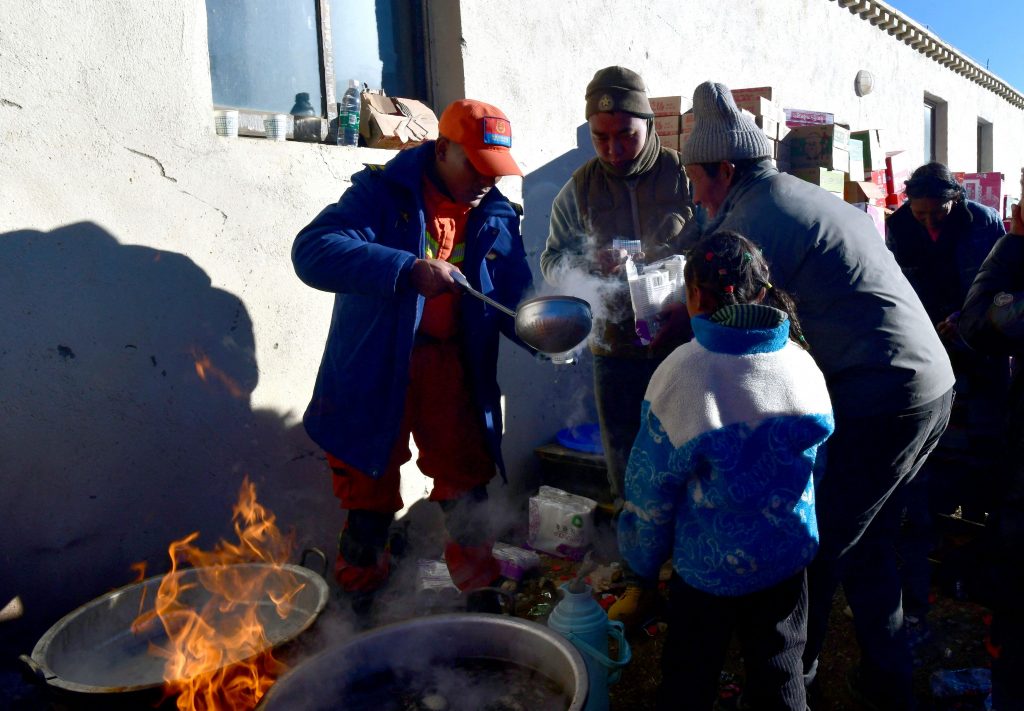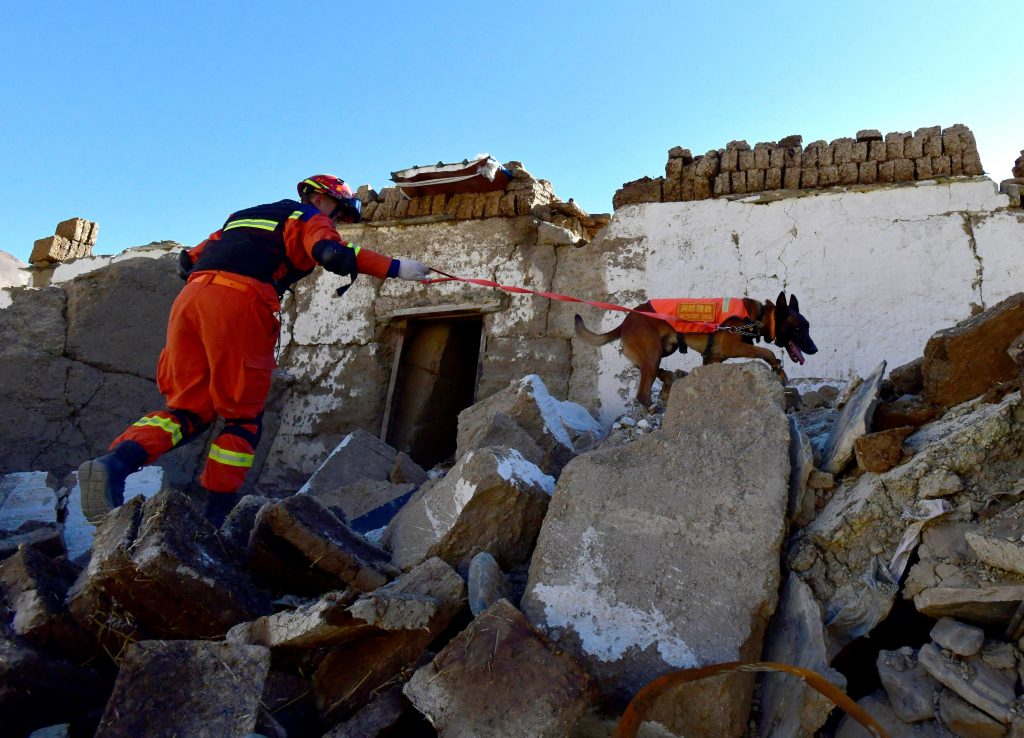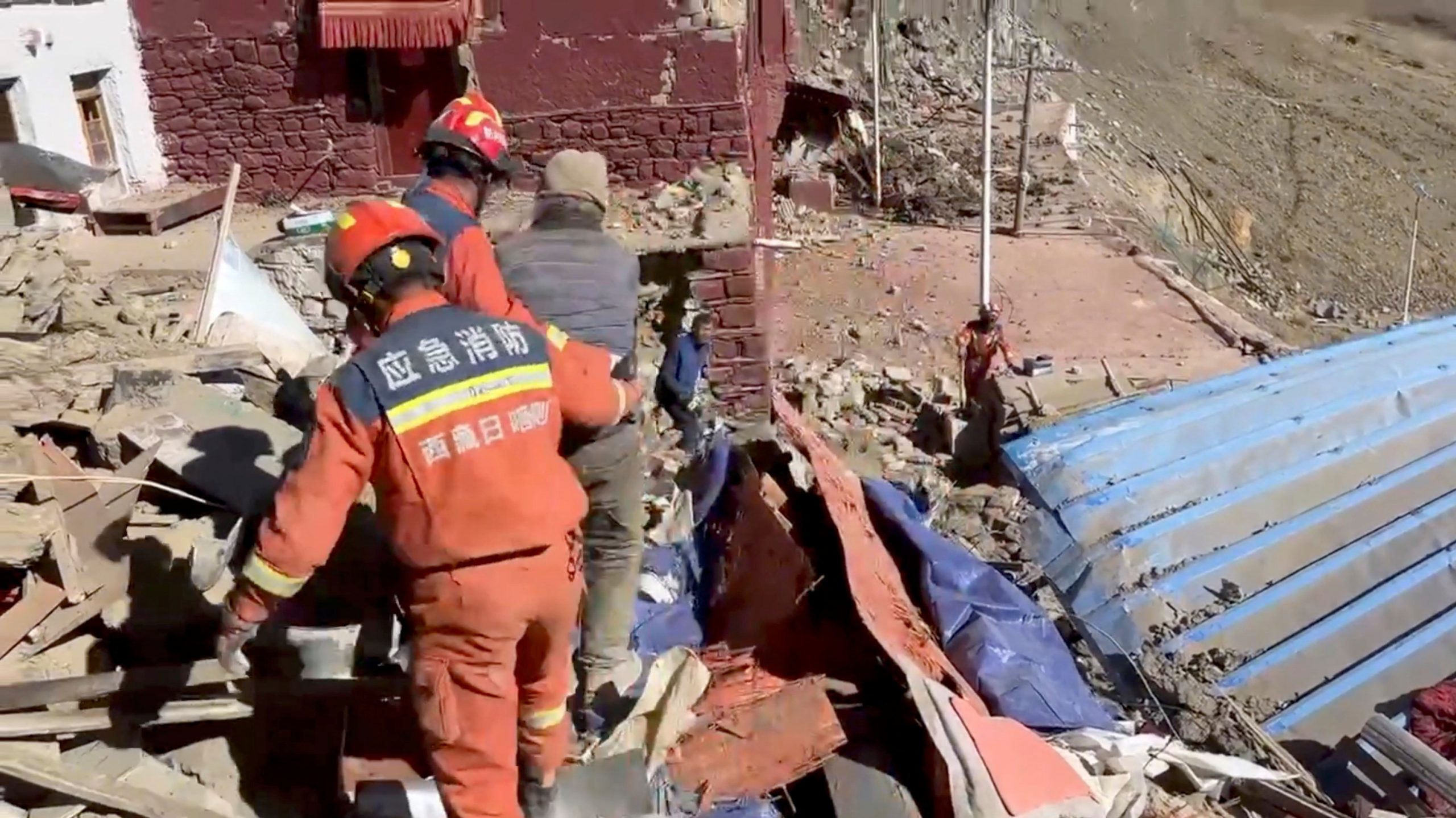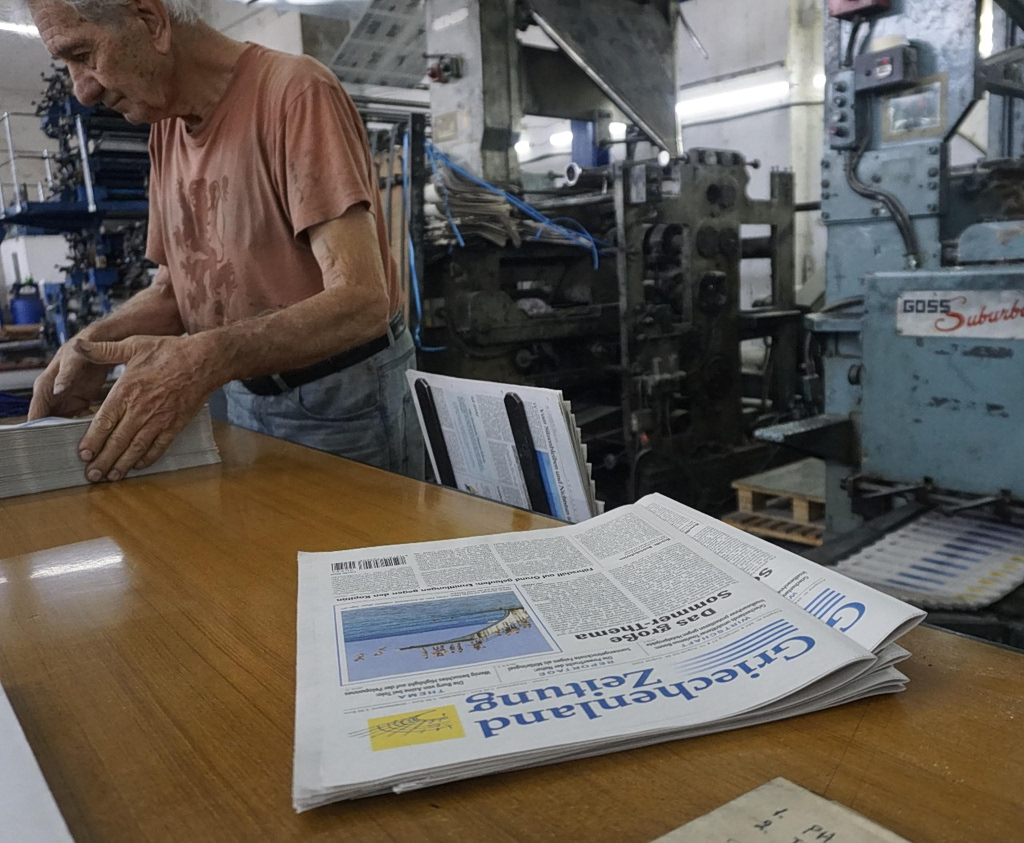One day after the initial 6.8 magnitude earthquake rocked Tibet, authorities are still searching for survivors under masses of rubble.

A firefighter distributes breakfast to quake-affected residents following the earthquake that struck Tingri county, in Shigatse, Tibet Autonomous Region, China January 8, 2025. cnsphoto via REUTERS ATTENTION EDITORS – THIS IMAGE WAS PROVIDED BY A THIRD PARTY. CHINA OUT.
According to Reuters, over 400 victims have been rescued by local authorities since the quake occurred Tuesday morning, although the number of those still missing or awaiting rescue remains unknown. The damage in the Stigatse region alone yields over 3,600 homes destroyed and nearly 30,000 people displaced.
The death toll currently sits at 126 with almost 200 injured. As the search for survivors continues, worries of hypothermia bolster the urgency of rescue efforts from the Chinese government. At such a high altitude as the epicenter of the earthquake, even a perfectly healthy person could only withstand 5 to ten hours at below-freezing without contracting hypothermia or worse, experts say, making timing a critical uphill battle.

A firefighter conducts search and rescue operation with a rescue dog at a village following the earthquake that struck Tingri county, in Shigatse, Tibet Autonomous Region, China January 8, 2025. cnsphoto via REUTERS ATTENTION EDITORS – THIS IMAGE WAS PROVIDED BY A THIRD PARTY. CHINA OUT.
Thousands of military personnel and rescuers have been dispatched by the Chinese government in an effort to minimize casualties.
Chinese President Xi Jinping’s called out for an “all-out search and rescue efforts, minimizing casualties to the greatest extent possible, properly resettling affected residents, and ensuring their safety and warmth through the winter,” according to the Guardian.
In the wake of the massive earthquake, 500 aftershocks of around 4.4 magnitude have hammered the region. According to the US Geological Survey, more than 10 earthquakes of higher than 6 magnitude have affected this area in the last century.



